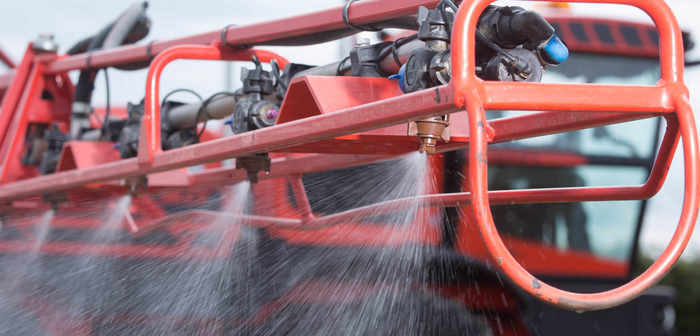Better targeting of wild oat herbicide applications this spring could improve control of the increasingly prevalent and yield robbing weed. Timing to hit weeds early and adopting new application techniques could make a significant difference, according to Syngenta Application Specialist, Scott Cockburn.
Wild oats have become a greater problem with the weed’s prolonged germination through the winter and early spring escaping control from growers’ focus on autumn grassweed herbicide programmes.
Wild oats are more competitive to the crop than black-grass, and there are increasing reports of the same mechanisms for herbicide resistance developing, warned Mr Cockburn. “That makes attention to spring herbicide applications even more important, to achieve high levels of wild oat control,” he urged.
He cited wild oats as being especially difficult to control in the spring because of the wide application window and fast growing crops shading the emerging weeds from spray droplets. In a wet and windy spring there is often limited spraying opportunities.
“The optimum time to control weeds is whilst they are small and before they have the chance to compete with the crop,” advocated Mr Cockburn. “Although some growers and agronomists may opt to leave control until later in the spring, to ensure more late germinating weeds had established.”
The timing for Axial herbicide, for example, does allows for control from first leaf growth stage, right through to the crop’s flag leaf sheath extending (GS41).
Mr Cockburn outlined new application research and trials being undertaken this season, to look at 90% Drift Reduction Nozzles for Axial and herbicide programme applications.
The current recommendation is to use the angled 3D Nozzle for targeting small grass weeds up to crop GS30, then moving to Amistar Nozzles for later applications, when the crop is larger and penetration required to hit the target wild oat growing points.
“New designs of angled 90% Drift Reduction Nozzles have shown good levels of deposition on small targets in wind tunnel tests, so could work well for the early timing,” he reported. “Field testing being carried out now will help confirm the potential.”
As with the Amistar Nozzles, the momentum of larger droplets from the 90% Drift Reduction Nozzles could also achieve greater penetration of the crop and target weeds more effectively with later applications, he believed.
Mr Cockburn pointed out that trials have shown 90% Drift Reduction Nozzles have been extremely effective in achieving good coverage and excellent results with other herbicide treatments, and could prove effective if conditions are less than ideal for spring wild oat control.
“The 90% Drift Reduction Nozzles do create more available spray days, which could be crucial to get the timing right,” he added.




